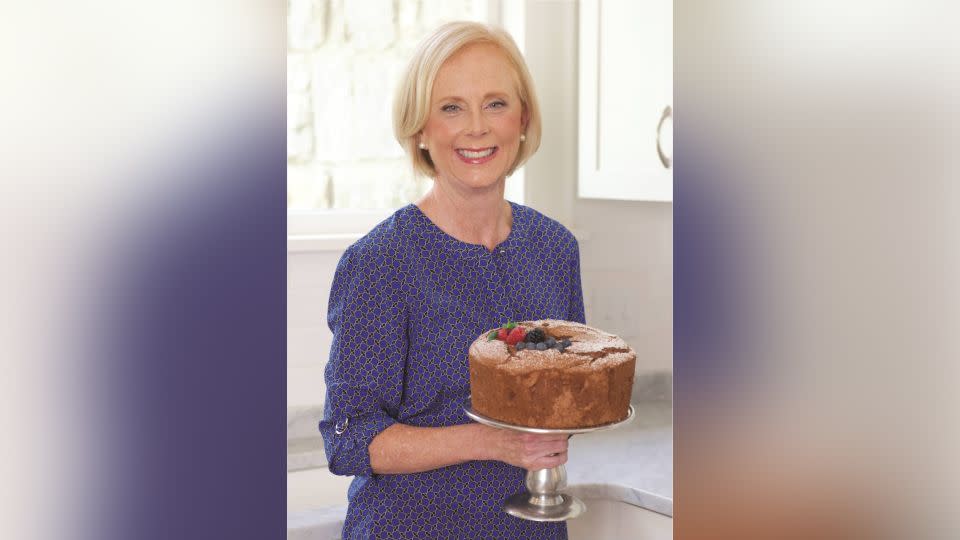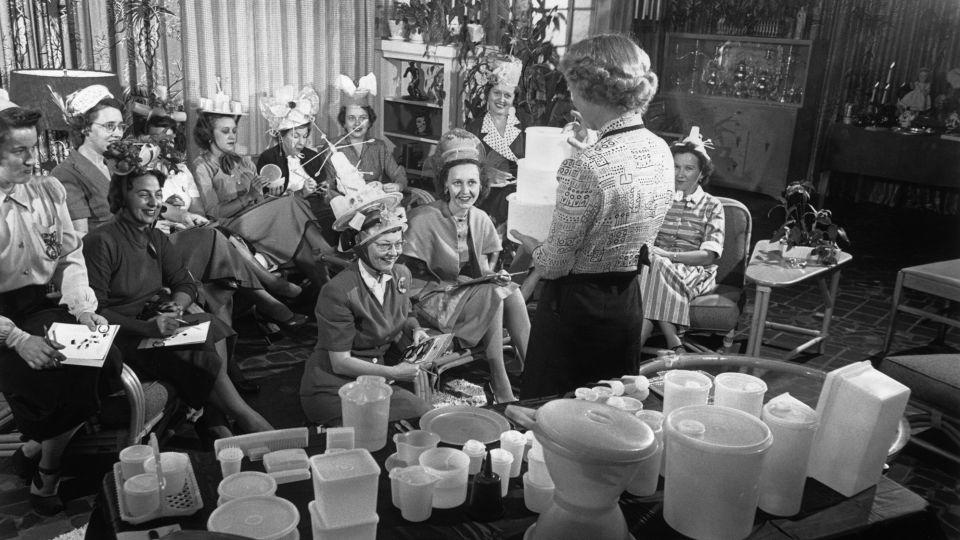Opinion: I wish I still had my mom’s Tupperware
- Oops!Something went wrong.Please try again later.
My mom left me her eight dining room chairs, a love of chocolate and the quirky way I place a hand on my hip just like she did when I stir soup or caramel icing at the stove. But she didn’t leave me her Tupperware.

Anne Byrn - Ashley Hylbert
I have to admire those pristine pieces of my good friend Martha, whose mother did leave her creamy white cake and pie keepers, in which a chocolate sheet cake or apple pie stays fresh – safe from moisture, heat, a sudden chill or hungry hands.
These sturdy carriers allowed us to take a delicious Bing cherry Jell-O salad across the street or tea cakes clear across the country. And the secret of its appeal is that it held food that was homemade and not store-bought.
If Tupperware has a down-side, it’s the bulkiness: Entire kitchen cabinets have been devoted to its storage. And it has a tendency to get separated from its owner: Names are plastered on Tupperware containers like polo shirts packed off with the kids at summer camp. If a friend leaves you with the rest of the cupcakes, they’re entrusting you with the return of their beloved plastic container.
For 20 years now I’ve worked with Martha on recipes for my cookbooks, but her main job is as a science and math teacher here in Nashville, and she puts her name on everything.
When she drops off some cake layers for a photo shoot, on top is a post-it note reinforced with masking tape that reads, ‘’Martha’s container.’’ It reminds me to get the Tupperware back to Martha pronto because like old photos or a charm bracelet, it’s sentimental to her, too.
Today there’s worry 77-year-old Tupperware has hit hard financial times and might not recover. If you ask me, Tupperware may have planted the seeds of its own demise: It’s not that it’s plastic; it’s that its products lasted too long. Like heirlooms, they were bequeathed from mother to daughter. And like a trusty Maytag washing machine of old, Tupperware never needed replacing.
Tupperware was born in 1946 when Earl Tupper, a Massachusetts home inventor and chemist was inspired by how paint cans could seal tightly and thought the kitchen could use plastic containers that did the same thing.
Tupper’s products were sold through home parties, social events where sellers invited friends and neighbors to eat, drink, and buy Tupperware, and star sellers received minks, home appliances and vacations for their efforts.
The timing was perfect. My mother’s post World War II America was mobile and moving to the suburbs. They had seen their own parents pack food in shirt and shoe boxes and even store fruitcakes to mellow in the drawers of a dresser. To them, Tupperware must have been a refreshing change: a tidier, more stylish way to store food items as mundane as meatloaf or as chic as chiffon pie.

A Tupperware party circa 1950 - Hulton Archive/Getty Images
And Tupperware, along with Eisenhower’s interstate highway system, allowed moveable feasts to begin. My family once drove from Nashville to Portland, Oregon with Tupperware when I was 12, and my father bought a camper to attach to the back of our Rambler station wagon.
We slept at campgrounds along the way, and my mother assembled sandwiches for lunch, pulling the provisions from a cooler with all the makings — meat, cheese, pickles, tomatoes, and lettuce — stored separately in celery-green Tupperware boxes. I’d give anything to have my mom’s soft blue bowl with snap-on lid in which she placed Bibb lettuce leaves, first rinsed and carefully dried in paper towels, just waiting for scoops of tuna or chicken salad.
Economists say Tupperware doesn’t resonate with today’s younger customers, but I beg to differ. Take a look at Etsy and you’ll see Tupperware is cool again. A set of six pastel vintage ‘’Millionaire’’ tumblers with iced tea spoons and lids that came off the factory line in 1947 can be found for $100. And fans of “The Marvelous Mrs. Maisel” have clamored to buy the same pastel nesting bowls that Midge Maisel sold at her Tupperware party in season 4.
On eBay you can buy a vintage pale yellow “sunburst gold” cake carrier from the 1970s for $10. Maybe they’re being snatched up by prop stylists, or appealing to people like me who didn’t inherit her mother’s Tupperware, or resonate with a younger generation that values sustainability and reusing something from a previous generation.
So even if Tupperware stops production, don’t expect its allure to vanish. It speaks to a time when food was made at home and shared with other people, even if the recipes started with a box of cake mix or Jell-O. And unlike less expensive supermarket knock-offs, you cherish Tupperware and collect it.
And – for those of us whose mothers didn’t leave us their Tupperware – there is something irresistible about popping open the lid of our friends’ bowls and peering inside to see what kale or potato salad, hummus or baba ghanoush, brownies or blondies, or other good stuff they’ve brought from home to share.
Today we have Ziploc bags, drive-thru breakfast sandwiches, and baking pans with snap-on plastic tops to facilitate eating on the road. We don’t really need Tupperware any more, but that doesn’t stop us from wanting it.
Not unlike keeping track of matching socks in a pair, as long as we keep up with the bottom and the top of the Tupperware we’ll hold onto these cherished pieces forever, until death do us part.
For more CNN news and newsletters create an account at CNN.com

